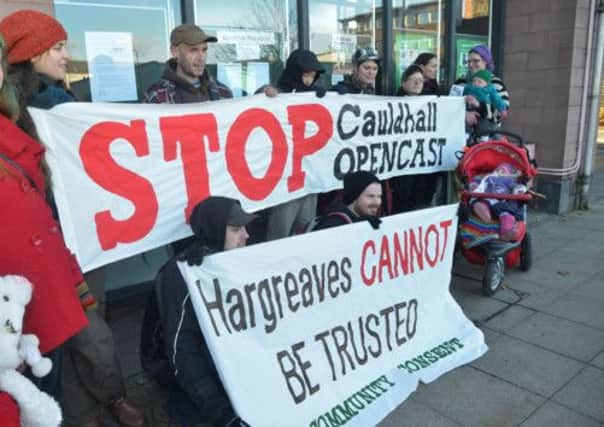Opencast mine near Penicuik given go-ahead


Midlothian Council yesterday granted final planning approval for the 1,235-acre site near Penicuik, following a split vote from councillors.
Planning officials had earlier backed the proposals as they determined them to be “necessary and in the national interest”.
Advertisement
Hide AdAdvertisement
Hide AdThe Cauldhall Moor site was among several acquired by Hargreaves Surface Mining following the collapse of Scottish Coal this year. The Durham-based firm says the proposal will create 230 jobs in the area and be in operation for 12½ years.
Opponents of the plans, however, had cited a number of concerns. The Scottish Wildlife Trust objected to the move until a proper legal agreement is put in place to ensure the proper restoration of the mine.
This follows a report from East Ayrshire Council that said the collapse of coal firms has left huge holes across the landscape, which would cost £130 million to restore in that region alone.
The Stop Cauldhall Opencast Group also campaigned on several grounds, including that it would “destroy” a family farm in the area, and others have questioned the viability of coal itself in the current market. Malcom Spaven, who lives a mile from the site, told The Scotsman: “We are clearly disappointed at the decision that councillors have made, for three reasons.
“Firstly, there is the immediate impact on those who live near the site: the noise, dust, blasting, vibration and the coal haulage lorries every three minutes heading for the bypass.
“Secondly, operators in Ayrshire and Fife, in particular, have escaped huge restoration costs through a legal loophole and the funding available for such measures has also collapsed due to the crisis in the industry. Thirdly, we are concerned about whether there is actually a market for this coal. Given there are increasing limits on CO2 and sulphur dioxide emissions, we are worried this site will never get off the ground and the promised jobs will fail to materialise.”
Hargreaves has denied this suggestion and pointed to the fact that ·coal is still used to generate 40 per cent of the country’s energy supply – 50 per cent at peak times.
Alison Johnstone, a Lothians MSP and member of Holyrood’s economy and energy committee, said Hargreaves was yet to detail where the coal would be shipped to once produced.
Advertisement
Hide AdAdvertisement
Hide AdShe said: “The impacts on local communities from this proposal, such as noise, dust and heavy traffic, are completely unacceptable. It is utterly illogical to approve yet more coal mining, given a whole host of factors.
“Cockenzie power station is switched off, so there’s nowhere local for this coal to go.”
She added: “Scotland has already failed its first two annual climate targets, so more fossil fuel is the last thing we need, and we’ve seen landscapes across Scotland scarred by opencast being abandoned by companies that go bust.”
Owen Thompson, chair of the Midlothian Council planning committee, denied there was no agreement in place for the eventual restoration of the site.
He said: “We are putting in strict conditions and have guarantees in place on the restoration of this land once mining has been completed.
“This will be a phased development, with each area mined and restored before the company moves on to the next area as the project progresses and that gives us some peace of mind over restoration of the site.”
Peter Gillatt, managing director at Hargreaves, said: “This is extremely positive news for the people of Midlothian and the Scottish coal industry, who will see genuine benefit from the hundreds of jobs that the Cauldhall Moor project will create.”